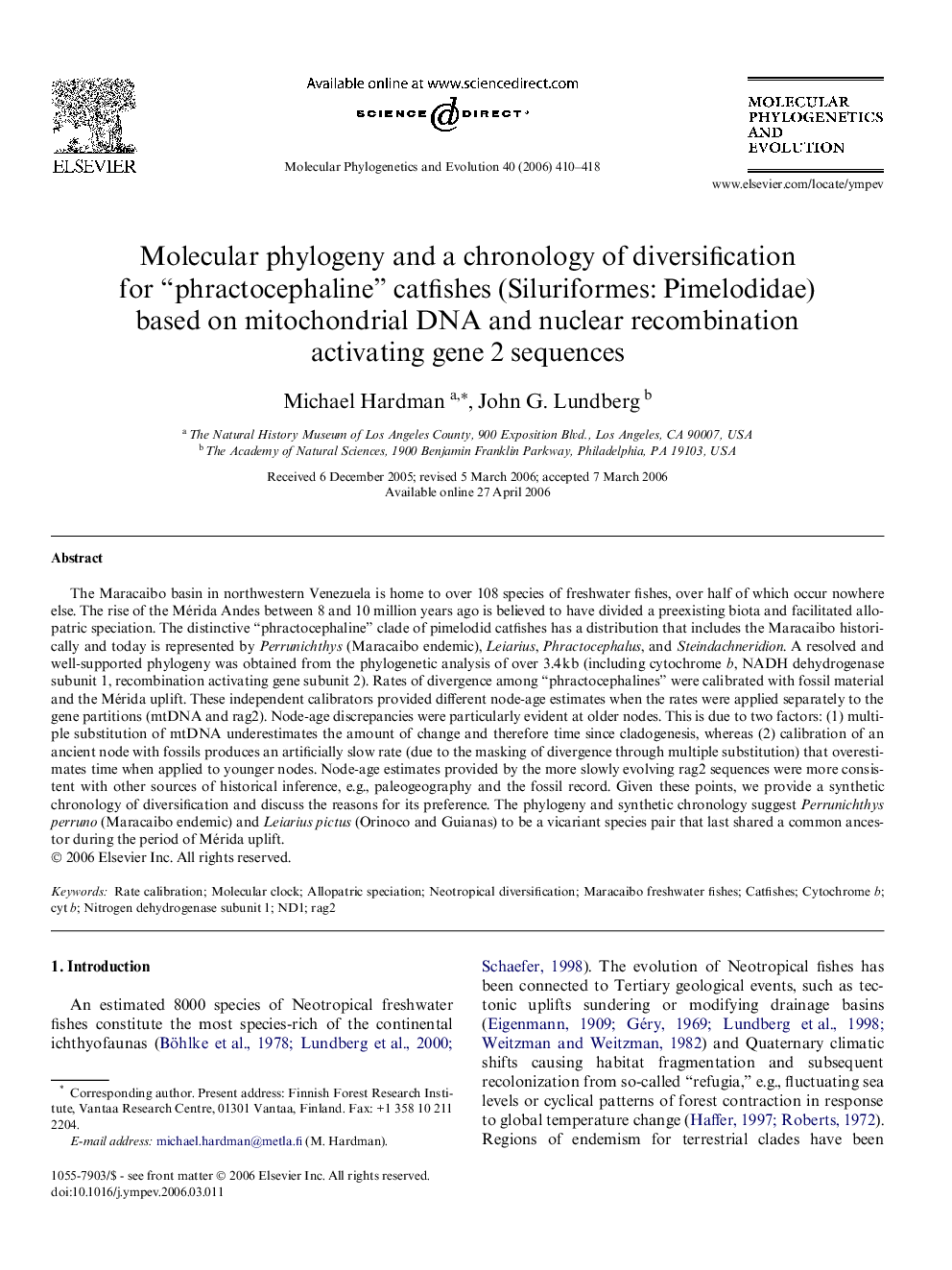| کد مقاله | کد نشریه | سال انتشار | مقاله انگلیسی | نسخه تمام متن |
|---|---|---|---|---|
| 2835971 | 1164359 | 2006 | 9 صفحه PDF | دانلود رایگان |

The Maracaibo basin in northwestern Venezuela is home to over 108 species of freshwater fishes, over half of which occur nowhere else. The rise of the Mérida Andes between 8 and 10 million years ago is believed to have divided a preexisting biota and facilitated allopatric speciation. The distinctive “phractocephaline” clade of pimelodid catfishes has a distribution that includes the Maracaibo historically and today is represented by Perrunichthys (Maracaibo endemic), Leiarius, Phractocephalus, and Steindachneridion. A resolved and well-supported phylogeny was obtained from the phylogenetic analysis of over 3.4 kb (including cytochrome b, NADH dehydrogenase subunit 1, recombination activating gene subunit 2). Rates of divergence among “phractocephalines” were calibrated with fossil material and the Mérida uplift. These independent calibrators provided different node-age estimates when the rates were applied separately to the gene partitions (mtDNA and rag2). Node-age discrepancies were particularly evident at older nodes. This is due to two factors: (1) multiple substitution of mtDNA underestimates the amount of change and therefore time since cladogenesis, whereas (2) calibration of an ancient node with fossils produces an artificially slow rate (due to the masking of divergence through multiple substitution) that overestimates time when applied to younger nodes. Node-age estimates provided by the more slowly evolving rag2 sequences were more consistent with other sources of historical inference, e.g., paleogeography and the fossil record. Given these points, we provide a synthetic chronology of diversification and discuss the reasons for its preference. The phylogeny and synthetic chronology suggest Perrunichthys perruno (Maracaibo endemic) and Leiarius pictus (Orinoco and Guianas) to be a vicariant species pair that last shared a common ancestor during the period of Mérida uplift.
Journal: Molecular Phylogenetics and Evolution - Volume 40, Issue 2, August 2006, Pages 410–418